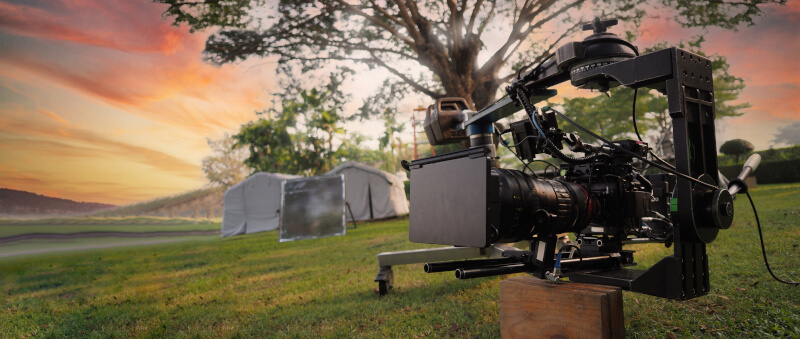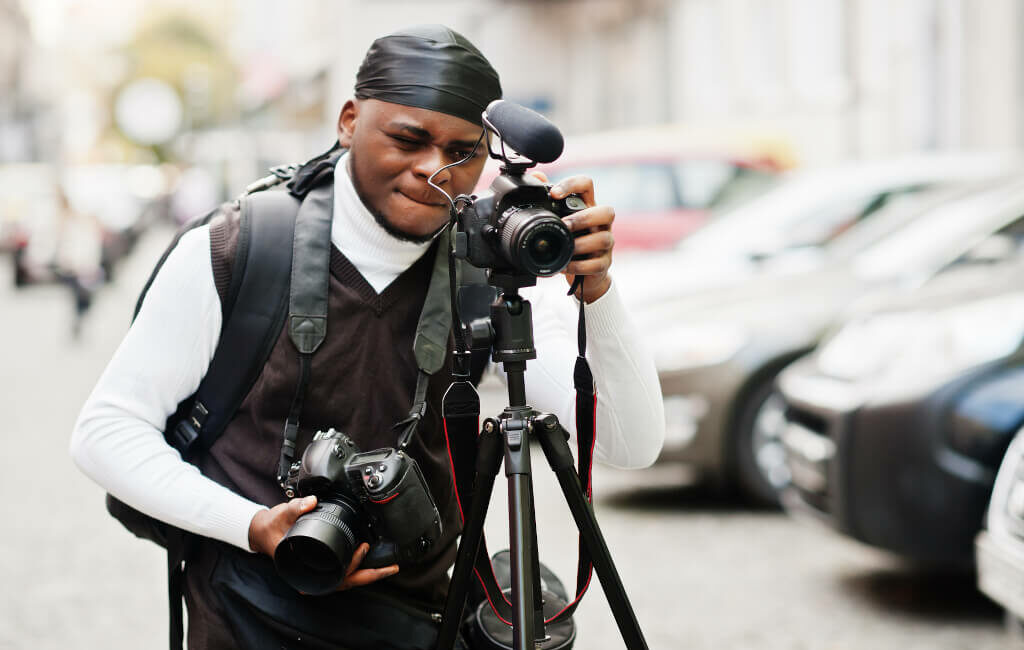The success of a production depends on the crew’s ability to rapidly and safely address any issues that arise. The most important details are shown here.
Let’s face it: even the smoothest-running film and video sets have their share of unforeseen challenges. That’s the price of doing business. There will be hiccups, such as when the power goes out or when an actor forgets their lines, but there can also be major issues that derail the entire production and endanger the cast and crew.
That’s why it’s so important for any filmmaker, director, or producer to anticipate the unexpected, prepare ahead, and implement practical safeguards to ensure everyone’s safety. Let’s have a look at a few helpful tips and crucial safety precautions that might assist film and video creators in dealing with unplanned difficulties.
You Have to Think on Your Feet
The reality is that there is always going to be something in the way. The capacity to think on one’s feet and come up with creative ideas is, in fact, a crucial skill for every filmmaker to possess.
Take charge of what you can, so that you can successfully adapt to unforeseen circumstances. You shouldn’t worry if something goes wrong. It’s not uncommon for unplanned moments to yield some of the most memorable footage. From this vantage point, here are four typical problems that can arise on set, along with suggestions for resolving them:
- Uncooperative Climate (Hello, Cape Town Weather!))
- Humidity, Condensation: Keep Equipment Above Dew Point When Shooting Outside to Inside
- Powered-Up Necessities: Prepare ahead of time for your resources, batteries, and generators!
- Develop a Parking and Travel Strategy
Unexpected Cape Town Weather

It’s one thing to film indoors, out of the elements. But if you’re trying to get real photos outside, the rain might spell disaster. Using mobile storage units is the most practical option. The obvious advantages of portable containers in this situation are surpassed by the many other benefits that come with using them.
With this method, you may protect your gear from the elements even if there’s nowhere to take refuge. And if you employ experts to transport your tools to the site, you can rest easy knowing they will arrive safely and in one piece.
Problems With Scheduling and Delays
One of our other pieces of advice for dealing with hiccups on set involves scheduling and the potential delays that can arise from competing schedules. In this case, there are two variables to think about. The first is that of the human element. Your staff and actors are real people with busy schedules and personal commitments. Naturally, given the importance they place on their work, it is difficult to encounter truly insurmountable obstacles here. Unfortunately, it’s not impossible. Verify the staff’s health and availability before setting up a shoot at a popular yet inaccessible site. It would be pointless to make preparations in case someone becomes sick or can’t make it. Similarly, due to their popularity, filming locations are often unavailable.
Problems With the Location
One of the potential issues with your location was touched on briefly in our prior hint. That’s not the end of your possible problems, though. The appeal of filming in a real-life setting has long been recognised. However, they don’t even try to account for the potential problems this can produce. Let’s think about the mayhem that onlookers can produce during a shoot. Some scenarios work better with the bustle and clamour of a city street as a backdrop.
People can be a distraction if you’re filming in a public place like a park or a nature reserve. If this is the case, you must get in touch with the location personnel in advance to make the necessary arrangements for a successful shoot. Similarly, it may be challenging to transport your equipment to some areas. Therefore, it is crucial to understand the process of moving film equipment.
Security Precautions
Our last piece of advice for dealing with hiccups on set is the well-being of your crew and actors. Understating the possible risk of a location or even props is a common source of horror stories. For instance, we’ve learned the hard way that it’s best to avoid utilising real firearms wherever possible on set. You should do the same and think about whether or not the shoot location is as secure as you thought it was. The magnificent cliffs and ravines make for a great backdrop. If you decide to go that route, though, you’ll need to make sure everyone on staff is aware of and abides by any special safety precautions they need to take. Your shoot’s quality can take a hit without jeopardising the safety of your cast and crew.
Lost or Damaged Equipment

Our advice on how to handle equipment in the event of a production setback is among the most crucial we can offer. The lack of necessary gear will prevent you from carrying out your shoot. You might be able to get something done, but it probably won’t be as good. You may have to start over after spending a whole day on the project. Because of this, you should always pack extras of the most important tools. Certainly a lot of them, if not all of them. Since most, if not all, damage happens during transport, knowing how to move industrial equipment is just as crucial. When you get there, you don’t want to find out that you can’t do your job.
The Load-Shedding Dilemma
South African producers are facing load shedding more and more as Eskom puts citizens through their paces; It doesn’t look like it’s getting better either! So, they have to be prepared. Out of 5 scheduled shoot dates, this can be significantly reduced because of load-shedding. In addition, things are made more difficult by the problem of circuit breakers being tripped or misplaced.
A 15-amp breaker is used for a circuit that needs a 20-amp breaker because a prop hairdryer and a little light were plugged into the wrong outlets. These interruptions can lengthen the time it takes to finish shooting. Poor lighting can force you to miss some opportunities. Keep in mind that a 6500-watt Honda generator and a plethora of stingers/extension wires are necessities for most film and TV lighting shoots in Cape Town.
Problem-Solving Strategies for Film Sets
Issues may inevitably crop up throughout filming. However, if you can maintain an adaptable mindset, everything on set will go more easily. You may lessen the blow of setbacks by making preparations for them and having a backup plan ready to go. Adaptability and the ability to take things as they come are crucial. Don’t give up; keep firing until you hit anything.
